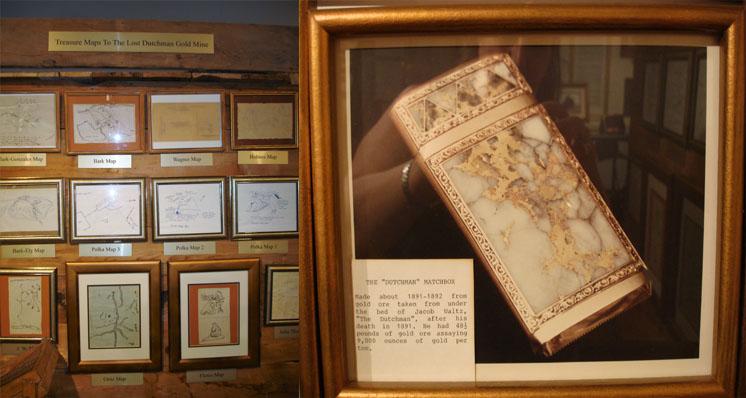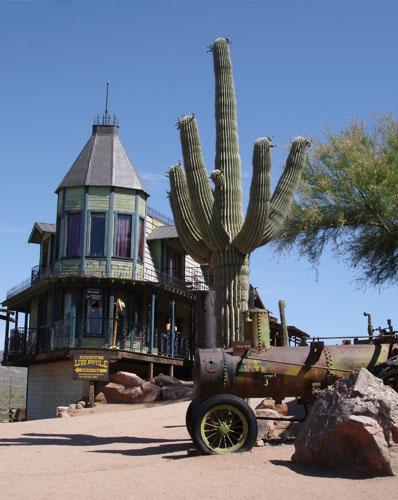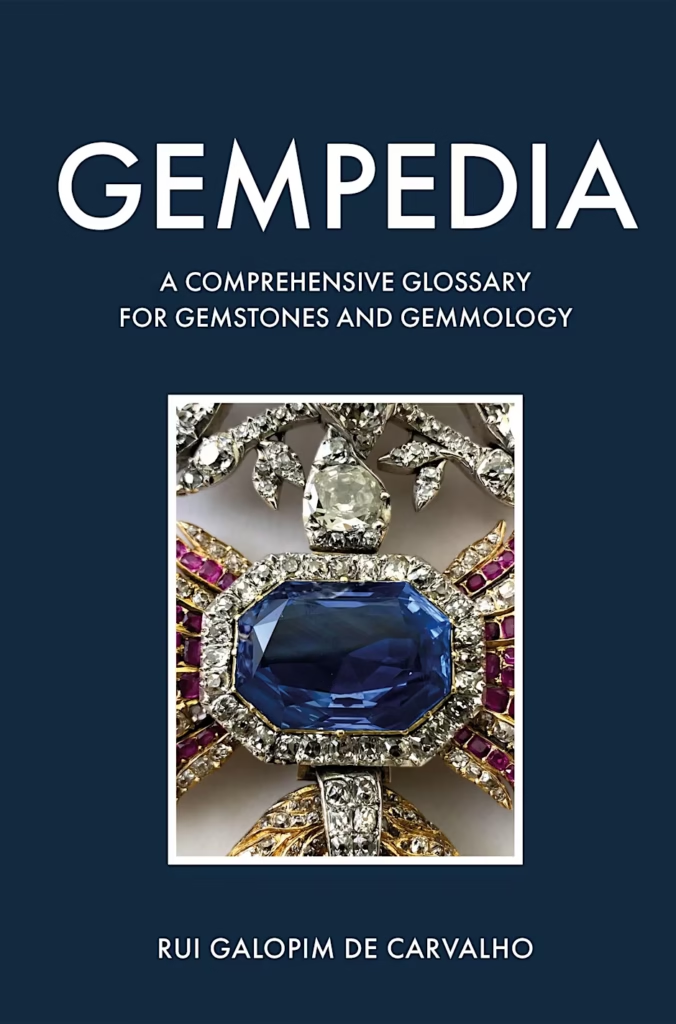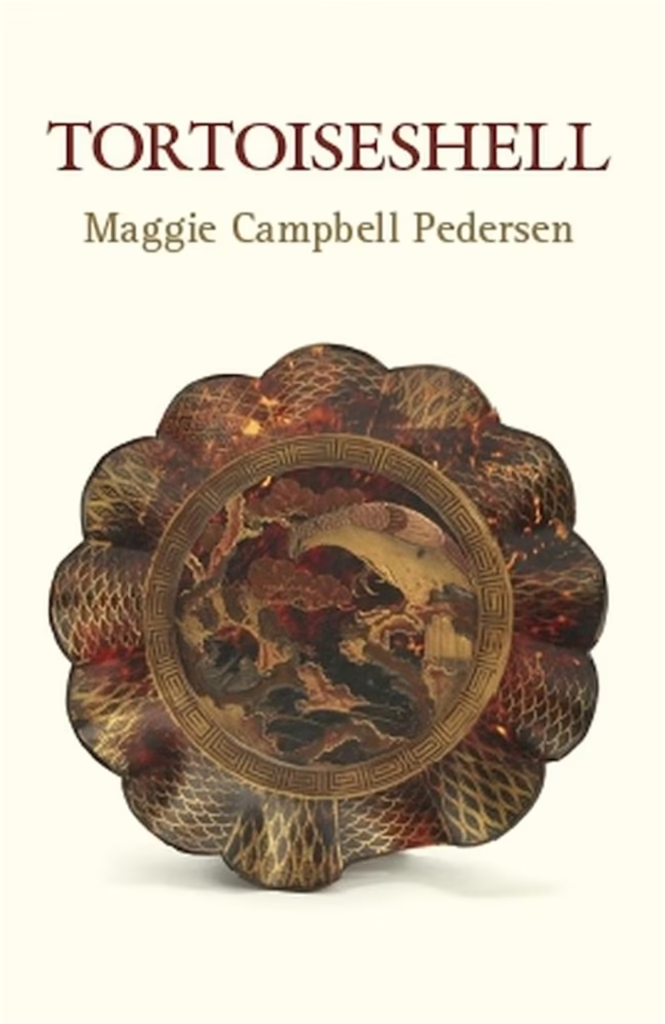
With its legends of gold seekers and treasure hunters, Arizona is still drawing the gaze of gemmologists and history enthusiasts to this day. Gem sculptor Helen Serras-Herman FGA takes us on a journey to this ‘gold fever’ state.
Living in a state where gold in abundance had been discovered in the nineteenth and early twentieth centuries, it was only inevitable that I would, at some point, find myself amidst gold fever.
Some incredible specimens of gold in quartz, found in central and southern Arizona, are part of splendid collections at the Arizona-Sonora Desert Museum as well as the University of Arizona (UA) Mineral Museum in Tucson.
A short time ago I finished carving two beautiful specimens of gold in quartz from an undisclosed location in southern Arizona, a commission work for the ‘Arizona Lapidary & Gem Rough’ store in Tucson. Today’s gold miners are as secretive about locations as were the old timers.

Left: The stunning gold specimen from the Huachuca Mountains in Cochise County is part of the splendid mineral collection at the Arizona-Sonora Desert Museum in Tucson. Middle: This beautifully formed gold specimen from the Vulture Mine resides in the Arizona-Sonara Desert Museum’s mineral collection in Tucson. Right: This is one of two beautiful specimens of gold in quartz from an undisclosed location in southern Arizona that I just finished carving.
My husband and I recently visited the Superstition Mountains, the centre of many gold legends and treasure hunts. We brought back some great specimens of gold in quartz from the famous Black Queen Mine in Goldfield.
But how did Arizona become a ‘gold fever’ state? I looked to prominent Arizona historian Jim Turner, a retired professor, author, and friend for some historic perspective: “In the 1730s, Spanish prospectors worked deposits twenty miles north of the US-Mexico border in an area later called Oro Blanco (white gold) because silver in the ore gave it a whitish colour.” Later, when miners (the ’49ers as they are known) started coming back from California’s gold rush in 1849, they came through Arizona and found placer gold and gold in quartz deposits. Placer gold, found in stream bed deposits, originates from ancient larger ore deposits, from which small gold flakes detach and roll downstream.

Two great specimens of gold in quartz from the Black Queen Mine in Goldfield mined several years ago.
The Superstition Mountains and Their Legends
The Superstition Mountains are located less than an hour’s drive east of Phoenix, just past Apache Junction. It is an area of 160,000 acres of dangerous land filled with saguaros, gold legends and Apache curses, conquistador and Mexican miners’ stories, Jesuits’ hidden gold treasure legends, as well as over 250 mysterious deaths. Gold seekers and treasure hunters have been searching in vain for the mine that bore the legend of the Superstition Mountains, the Lost Dutchman Mine, named after Jacob Waltz, a German prospector known as the ‘Dutchman’. It is believed that he found the richest gold mine in the world, possibly an old Spanish mine, but took the secret to his grave in 1891, leaving behind only some riddle clues.
The legend of the Lost Dutchman Mine still reels in treasure hunters, who follow those clues on old paper or stone maps that take them deep into the Superstition Wilderness, an areas of 242 square miles that are filled with steep canyons, rocky outcroppings, cacti and thick brush.
Among the many that have lost their lives searching there, are three treasure hunters from Salt Lake City, Utah, lost forever as recent as July of 2010. The dangers from the Apaches, who killed many in the region protecting their sacred land and igniting the legendary Apache curse, are now long over. However, the danger from the summer temperatures that soar well above 110 degrees, are real, and make it deadly to unprepared hikers.
Mineral prospecting has been banned since 1983 when the area became a national wilderness, yet every year many travellers hope that they will stumble across the fabled gold mine.

Left: The Superstition Mountain & Lost Dutchman Museum treasure maps. Right: Dutchman matchbox SM Museum. Rich gold in quartz ore, supposedly from the Lost Dutchman Mine.
Lost Dutchman Museum
For a safe way to learn about gold in Arizona, its mining history and legends, head to the Superstition Mountain & Lost Dutchman Museum. With a variety of exhibits that allow the visitor to see what the Old West was really like, the museum provides a wealth of information about the old gold mines of the area. With stunning displays of treasure maps and over 40 books about the legend of the lost gold, many of them out-of-print, you truly understand the power of the legends and the quest for gold. After looking at the book display, one is very thankful that he museum offers and extensive bookshop!
The Superstition Mountain
The Superstition Mountain & Lost Dutchman Museum is located on Hwy 88, the historic Apache Trail, now designated as Arizona’s first historic road. The trail covers 47 miles from Apache Junction to Roosevelt Lake. The drive, at times very rough with steep grades, offers some fantastic views of the backside of the Superstition Mountains, as well as of the three lakes that dam the Salt River: Canyon Lake, Apache Lake and Roosevelt Lake.
Nobody else can describe the Apache Trail better than president Theodore Roosevelt, on his way in 1911 to the Roosevelt Dam dedication ceremony: “The Apache Trail combines the grandeur of the Alps, the glory of the Rockies, the magnificence of the Grand Canyon and then adds as indefinable something that none of the others have, to me, it is most awe-inspiring and most sublimely beautiful”.
Goldfield Ghost Town and Mine
Following the Apache Trail north for only a short drive, you will reach Goldfield Ghost Town, which lies in the shadow of the legendary Superstition Mountains. This is a true 1890’s boomtown that had 50 working mines in the district after rich high grade ore was found in the area in 1892.
The abandoned town was revived in 1988, and today you can ride a narrow gauge railroad that circles the town for a mile and a half, offering a narrated scenic ride of the historic buildings and the famous Black Queen, Bulldog and Mammoth Mines.

Guided tours of the Goldfield Mine take you underground to a reconstructed mine very close to the original, now flooded mine.
Exploring Goldfield History
At the Goldfield Historic Museum, in the heart of the ghost town, you can learn more about the first very rich gold strike in 1892 and the 4,000 miners that lived there for five rich years. There are 13 treasure maps on display, from the so-called old Spanish maps, to more recent ones. A wonderful little museum with very friendly staff eager to share their knowledge!
Guided tours of the Goldfield Mine take you underground to a reconstructed mine very close to the original, now flooded, mine. It is always worth listening to the well-versed guides on the history of the local mine, discover the gold mining equipment that was moved there from the original nearby mines, and learn more about the mining procedures.
The Vulture Gold Mine
The Dutchman, Jacob Waltz, also prospected in the Vulture Mine, and was employed there as a consultant. The mine is located northwest from Phoenix near the old historic town of Wickenburg, famous today for its Western flair. There, in 1863 Austrian immigrant Henry Wickenburg, discovered gold. Legend has it that he was trying to retrieve a vulture that he had shot, when he found the quartz outcropping. Although Wickenburg sold the mine after a few years, it became one of the most productive gold mines in the history of Arizona, producing gold worth more than 200 million dollars. The gold is embedded in the quartz ore, and requires hard rock mining. President Franklin Roosevelt closed the mine in 1942, during World War II. The miners left, believing they would return in 6 months, but the mine never re-opened.
The Vulture mine used to be open daily for self-guided tours when we last visited in 2011, but now it is accessible only via a two hour guided walking mine tour on Saturday morning 8:30-10:30am. It is a great place to visit and walk the trails that take you by the ‘Glory Hole’, the Blacksmith’s Shop and the Main Shaft, the Assay Office, and the 80-Stamp Mill. At the Power Plant, which served as the Machine shop, time almost stood still. All the equipment is still there, just a bit dusty and rusty, waiting for miners. This is a rarely seen sight, eerie and awe-inspiring. All the tools are left in place, as if the workers are just out for lunch.

Goldfield as it is today.
Prospecting for Gold Today in Arizona
According to stats from Gold Maps OnlineTM their maps show currently 46,199 active gold claims and 364,629 abandoned claims in the state of Arizona on public lands.
A great resource for information about gold in Arizona is the ‘Gold Prospecting’ page of the Arizona Geological Survey’s (AZGS) website.

Gold in quartz from the Black Queen Mine. This site was one of three major mines; along with the Bulldog and Mammoth Mine that made Goldfield famous in the 1890s.
Several associations in Arizona promote recreational gold planning and mining. Members of the Arizona Association of Gold Prospectors (AAGP) Phoenix Chapter usually go prospecting within one or two hours’ drive from Phoenix, Mesa or Tucson. The Gold Prospectors Association of America (GPAA) is a national organization. With five chapters in Arizona, there are plenty of locations and options to follow your gold fever.
For a two hour gold panning adventure join Apache Trail Tours, an award-winning our company based in Goldfield Ghost Town offering guided tours from one to eight hours.
If by now, you are sweltering from gold fever, besides going prospecting with any of the local gold clubs or purchasing gold specimens, you can buy your own gold mine in Arizona. My husband is already checking his wallet!
Next time you visit Arizona, please take a trip to these wonderful historic sites, museums and mines; they will enhance your knowledge about the difficulties of gold hard rock mining, the thrill of placer gold panning, as well as the successes and failures of gold-seeking. You may be inspired to go gold prospecting, or simply enjoy all the legends disseminated for over a century.
Sources
For currently available claims, please visit: goldmapsonline.com/arizona-gold-map.html, azgs.az.gov/minerals_gold.shtml, arizonagoldprospectors.org, goldprospectors.org, apachetrailtours.com, goldrushexpeditions.com/state/arizona/.
All images courtesy of Helen Serras-Herman.
Interested in finding out more about gemmology? Sign-up to one of Gem-A’s courses or workshops.
If you would like to subscribe to Gems&Jewellery and The Journal of Gemmology please visit Membership.
Cover image Goldfield Ghost is an abandoned town, revived in 1988, filled with museums, shops, and an underground mine, all in authentic-looking buildings. Image ©Helen Serras-Herman.
{module Blog Articles Widget}


